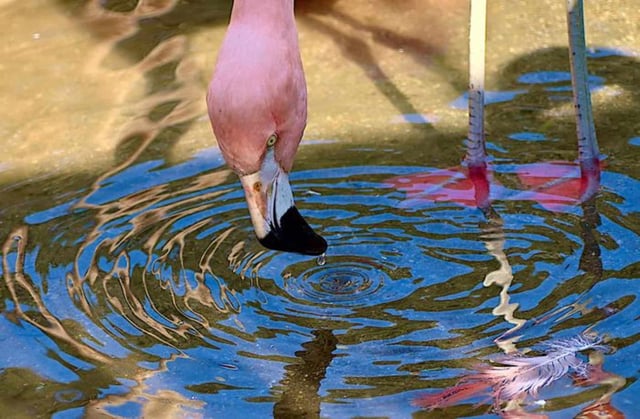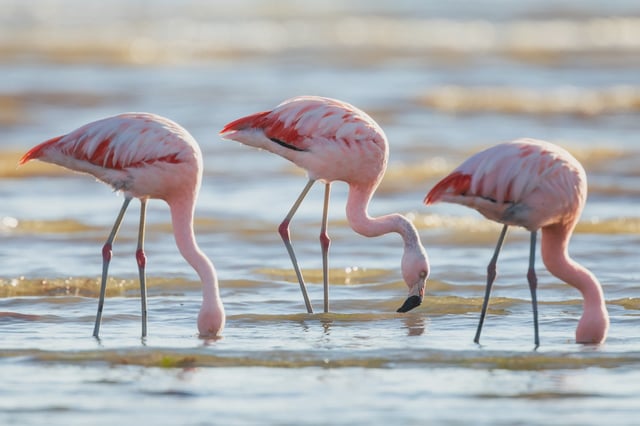Overview
- Scientists have confirmed that flamingos actively manipulate their environment to capture prey, using their webbed feet to churn sediments and create vortex traps in shallow alkaline lakes.
- The birds' inverted L-shaped beaks perform a rapid 'chattering' motion, generating von Kármán vortices that funnel prey such as brine shrimp directly into their mouths.
- Mechanical simulations show that beak clapping enhances prey intake by up to seven times compared to passive filter feeding methods.
- Computational fluid dynamics experiments revealed symmetrical vortices around the beak and feet, validating the efficiency of this biomechanical feeding strategy.
- The findings, published in the Proceedings of the National Academy of Sciences, challenge long-held views of flamingos as passive feeders and suggest bio-inspired applications in filtration systems and aquatic robotics.


